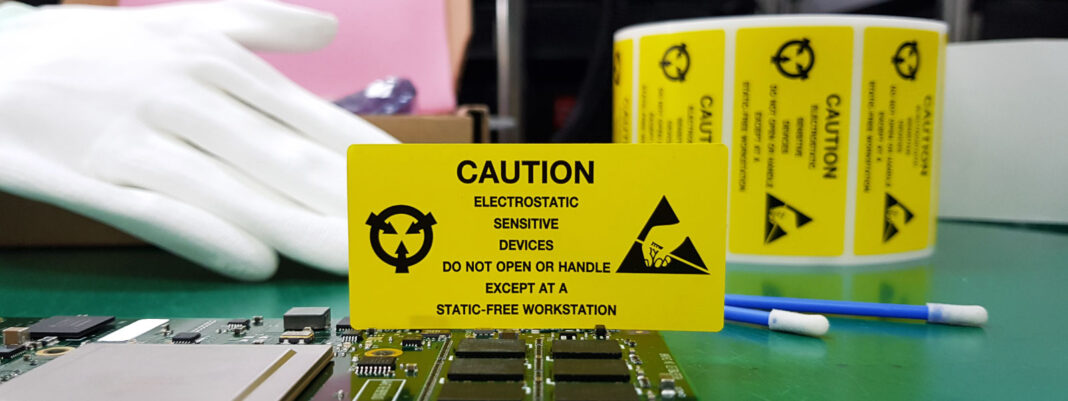ANSI/ESD S20.20 Standards: Are You in Compliance?
Commercial facilities from NASA to Lazy-Z-Boy need to comply with ANSI/ESD S20.20 standards.
The ANSI/ESD S20.20-2021 standards are amended every seven years, most recently in 2021. Changes include the clarification of calibrations on measuring instruments, and some definitions have been revised. If there is any question of your facility’s compliance, it is a good idea to have a third party come in to inspect.
Why Are ESD Standards Important?
ANSI/ESD S20.20 standards are about more than creating hoops for companies to jump through.
Static electricity can damage printed circuit boards and other expensive electronically sensitive equipment, resulting in large monetary losses for a simple problem. It can also be dangerous to workers when extremely high charges pass through their bodies. Complying with ESD standards helps ensure worker safety and keep equipment and electronic product components operational.
Static electricity builds up on everyday objects as they are moved around. A piece of plastic can become charged as it is moved from one shelf to another and transfer that charge to other items. The amount of charge built depends on many factors. For example, in winter, when humidity is low, charges will be higher than in humid summer months.
Electronics testing and production facilities avoid problems in static-sensitive areas with ESD-rated equipment and storage containers that resist static build up—usually this takes a resistivity of around 13 ohms.
In addition to resisting static buildup, ESD prevention should include equipment to safely dissipate static charges. For example, workers should wear wrist straps and sometimes heel grounders and ESD smocks. Workbenches should be equipped with anti-static mats and, in some cases, ionizing fans. Any facility working with sensitive electronic components should have Standard Operating Procedures (SOPs) in place for keeping work areas tidy and help prevent ESD damage.
With ESD Control SOPs, you can be confident that you are staying compliant with industry standards and that everyone is following procedures to keep themselves and expensive parts safe.
ESD Control SOP
To lay out an ESD control program, you want an overall ESD assessment of your space by a third party. TestEquity offers free ANSI/ESD S20.20 assessments to check for compliance and make suggestions where things could be improved.
After having your facility checked and making any improvements to bring it into compliance, develop SOPs that will help keep things that way. The SOPs should be simple and should be reviewed on an annual or bi-annual basis to make sure everyone is on board.
Your SOPs will include storage standards for electronically sensitive equipment, what resistivity rating is required, where to purchase additional storage materials, tools, and other equipment. You should also include ESD training materials, definitions of areas with differing sensitivity, and tips for best practices during day-to-day operations. A digital copy of your ESD control SOPs should easily accessible. with a hard copy placed near other safety material like an MSDS binder.
TestEquity can Help
Sign your facility up for a free ESD assessment. The assessment will give you the details behind why certain areas pass or fail. Your TestEquity ESD specialist will also make recommendations on how to correct areas that failed or were close to failing. Last, the specialist can help you identify where your current ESD equipment will have the most impact and assist with a long-term ESD compliance plan.
In addition to the free service, TestEquity also supports facilities by offering formal ESD training and recommendations for ESD control materials and procedures. TestEquity understands that everyone has a job to do, and they want to help laboratories and managers provide the best ESD guidance possible to keep employees and equipment safe. Sign up for your free ESD Assessment today.



